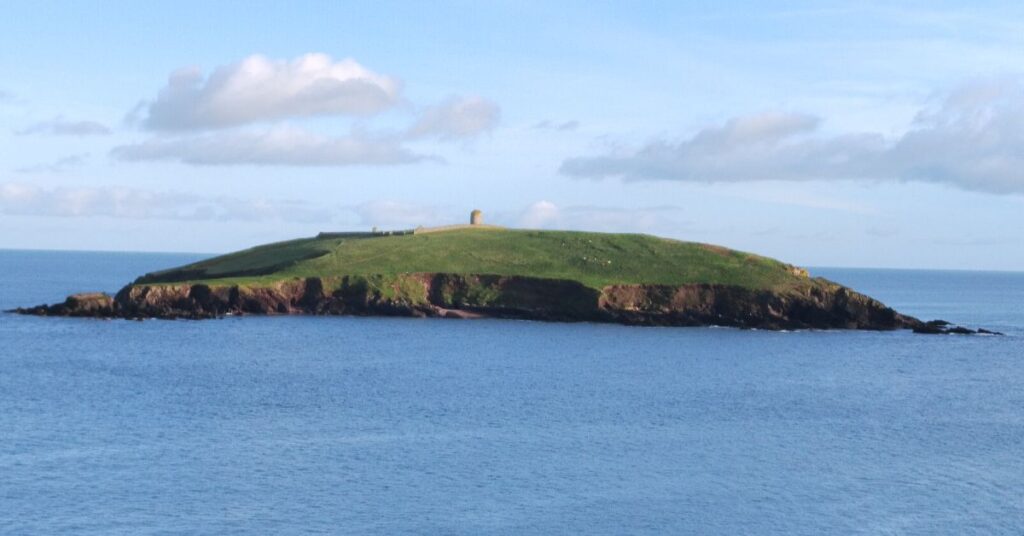For our last week in Ireland (on this trip) we decide to head back to the coast. The dogs are definitely missing their beach walks!
We booked a cottage (thru Sykes Holiday Cottages – still our favourite site for booking cottage stays) just south of Youghal Town (pronounced “yall” or “yawl” – the US pronunciation is perfect). Youghal is only a couple of hours from our last place (near Borrisoleigh, County Tipperary), so we have time to stop and explore a bit along the way.
Our first stop is Glengarra Wood Forest Park. No special reason to visit this park, just a place along the way to let the dogs stretch their legs. Park was easy to find, but the car park was under construction, so we just did what other cars did and pulled off the dirt road onto a flat space. We followed a path for all of 10 minutes before it started to rain (did I mention it rains a lot here?). Not a hard rain, but a consistent drizzle. Which turned into a downpour a few minutes later. Once again we are soaked, but the dogs don’t seem to care so we trundle on a bit more. Nice walking path. Would be a bit more enjoyable if the rain wasn’t running down my nose.
We have a scheduled visit at some nearby caves, so back to the van. The dirt area we parked on is now a mud area. Getting the soaking we dogs into the van with a minimum amount of mud is the goal; partially achieved: A for effort, D- for results.
Our scheduled stop is for a tour of the Michelstown Caves. According to the signs next to the cave entrance these are “Considered one of the most spectacular caves in Europe”. Fact or marketing hype run amok? We shall find out shortly…
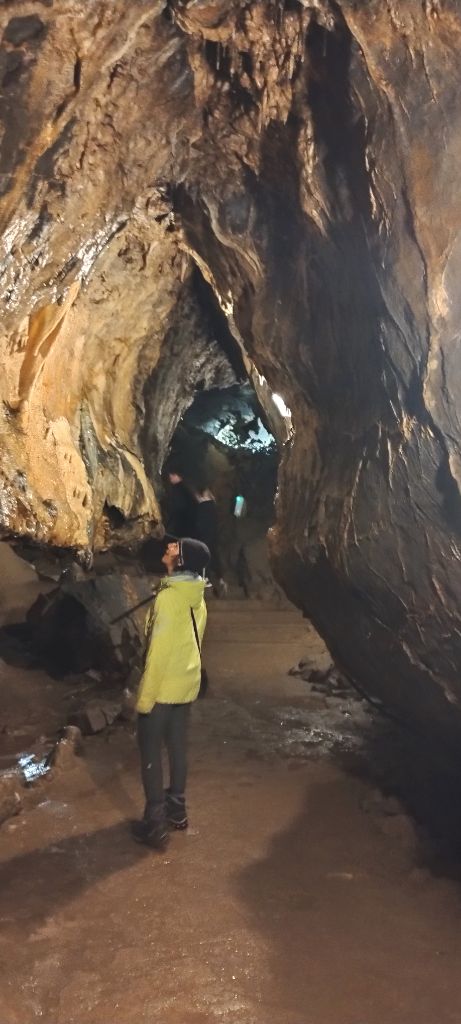
The cave was originally discovered in 1833 and tours have been conducted by 6 generations of the Mulcahy family who own the land.
Abbie, our tour guide, is not a Mulcahy, but lives just down the road.
This is a different kind of cave for us. The caves we have visited in the United States have been formed by calcium carbonate dissolving limestone to form openings (caves). The Michelstown caves have been formed through erosion. A river flowed underground and created the cave system.
In 1972 footpaths and electricity were installed and the first “show cave” in Ireland was born. Earlier tours required candles (later lanterns) and lots of scrambling about.
I don’t know why, but this cave feels “young” compared to other caves we have been in. There are several cave formations (stalactites, etc), but not a lot compared to limestone based caves, so maybe this accounts for the feeling.
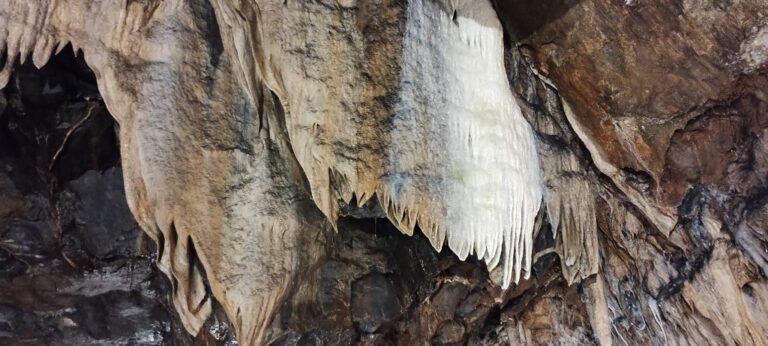
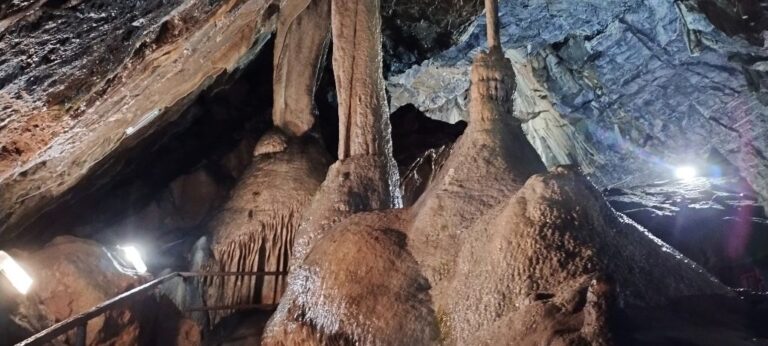
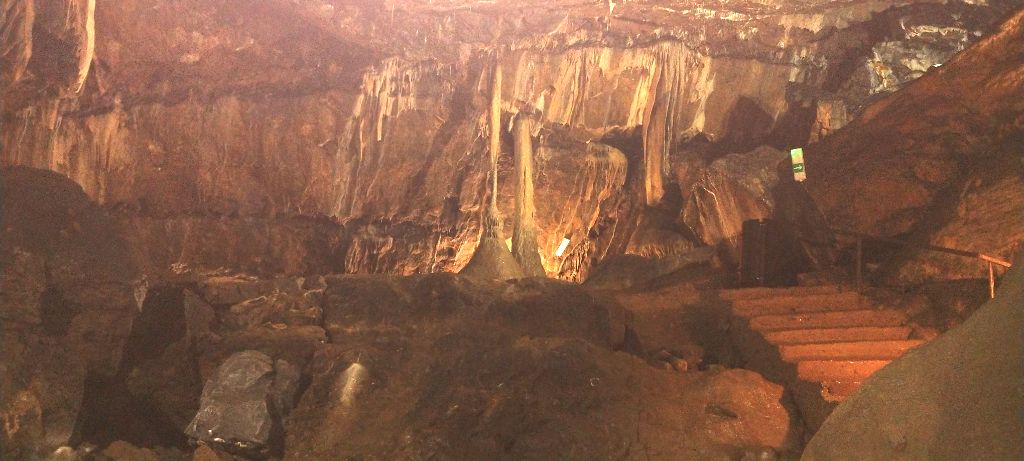
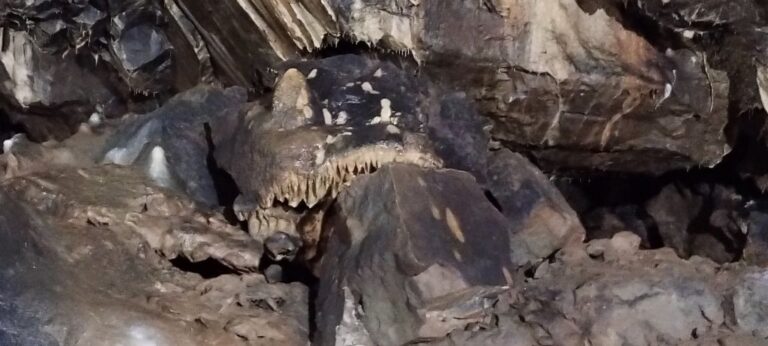
Google maps lead us astray (not the first time, but we couldn’t get around with GMaps, they are pretty good).
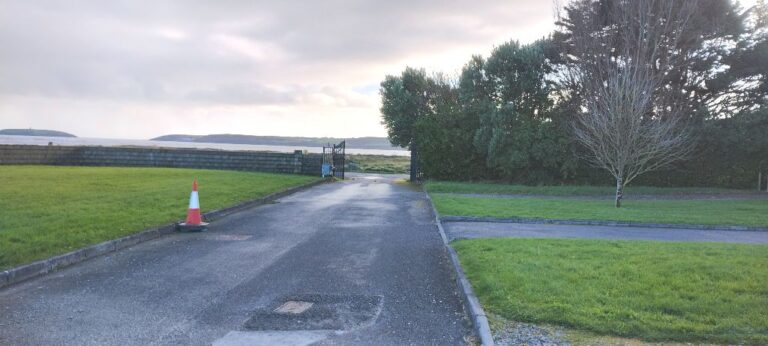
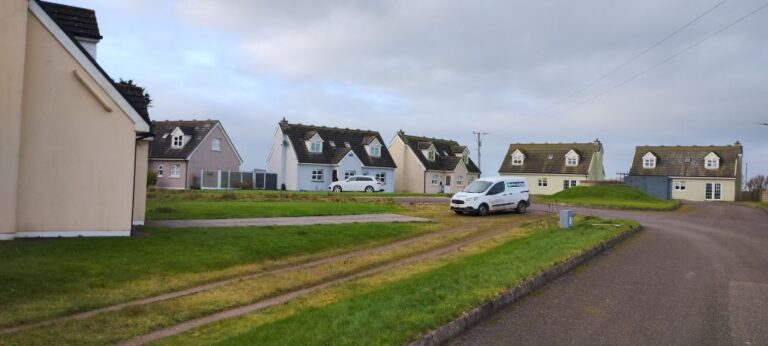
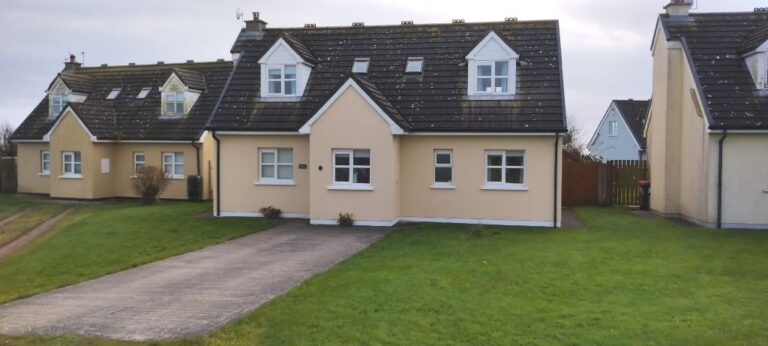
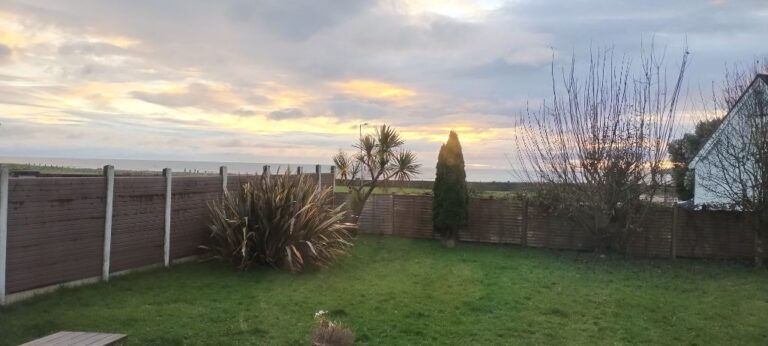
Youghal is a nice town about 10 minutes away. It’s christmas time and the town had lights and decorations up, which made for a fun walk around town,
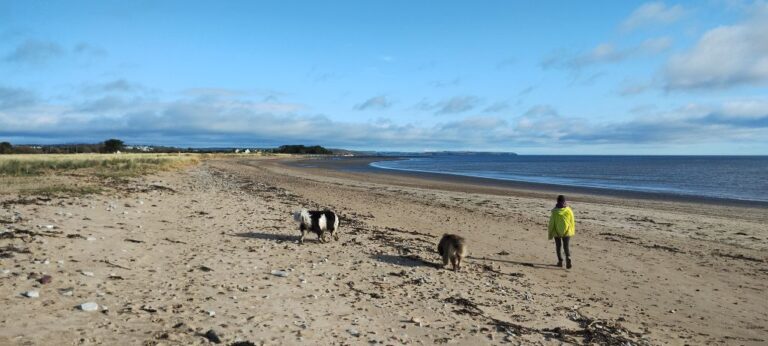
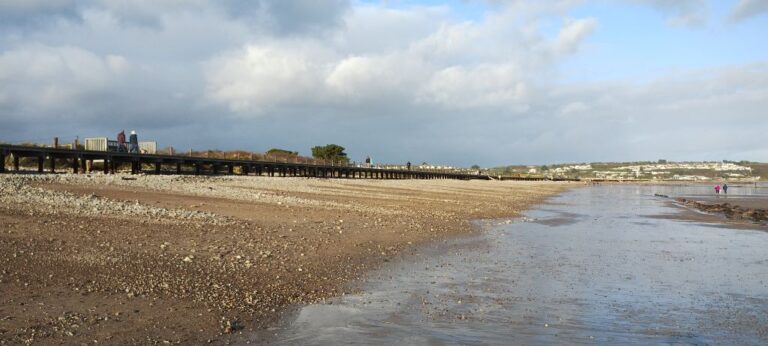
We spent a day in the town of Cork and found some really nice old streets, some pedestrian only, to wander around. We almost had to leave the dogs in the van as we forgot their leashes. We found a Dealz store (Irish equivalent of a dollar store) and bought some rope and a utility knife to make some emergency leashes. People in Ireland really like big dogs. Lump is a hit here. Its strange that they like dogs so much, but you can’t bring them into pubs (which has caused a major decline in my Guiness consumption).
About 20 minutes south of our cottage is Knockadoon Pier, which is the trail head for the Cagel Way Coastal Trail, a cliff walk along the Celtic Sea coastline. Capel Island (shown in the photo at the top of this post, and visible in the photo of Knockadoon Pier below) is an Irish national nature reserve. An incomplete 19th century lighthouse can be seen along with some small white dots, which we initially thought were sheep, but later found out are feral goats.
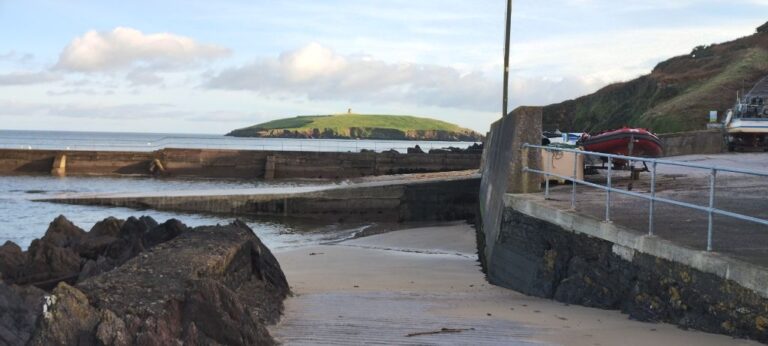
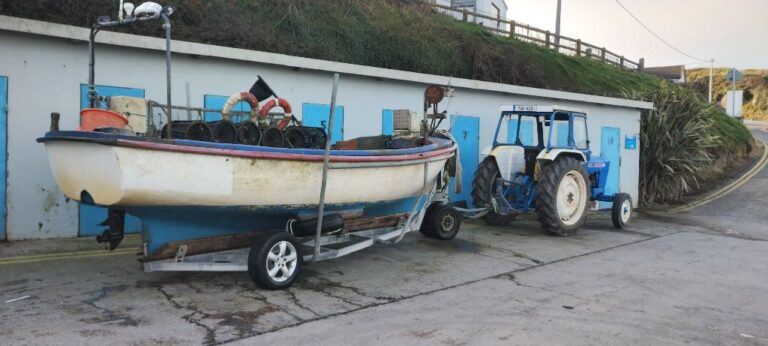
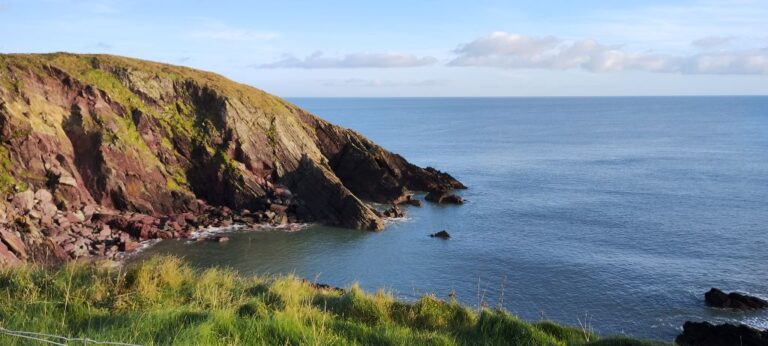
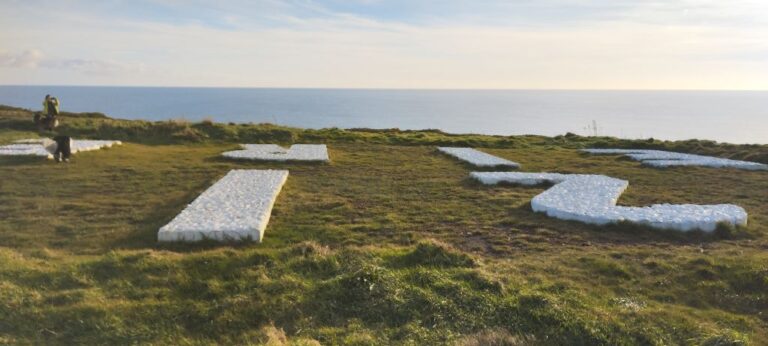
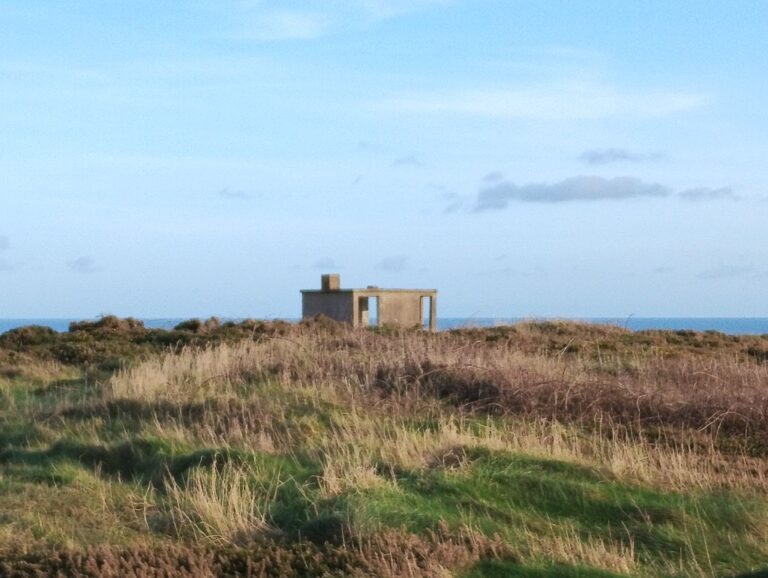
November 18 – 24, 2023

